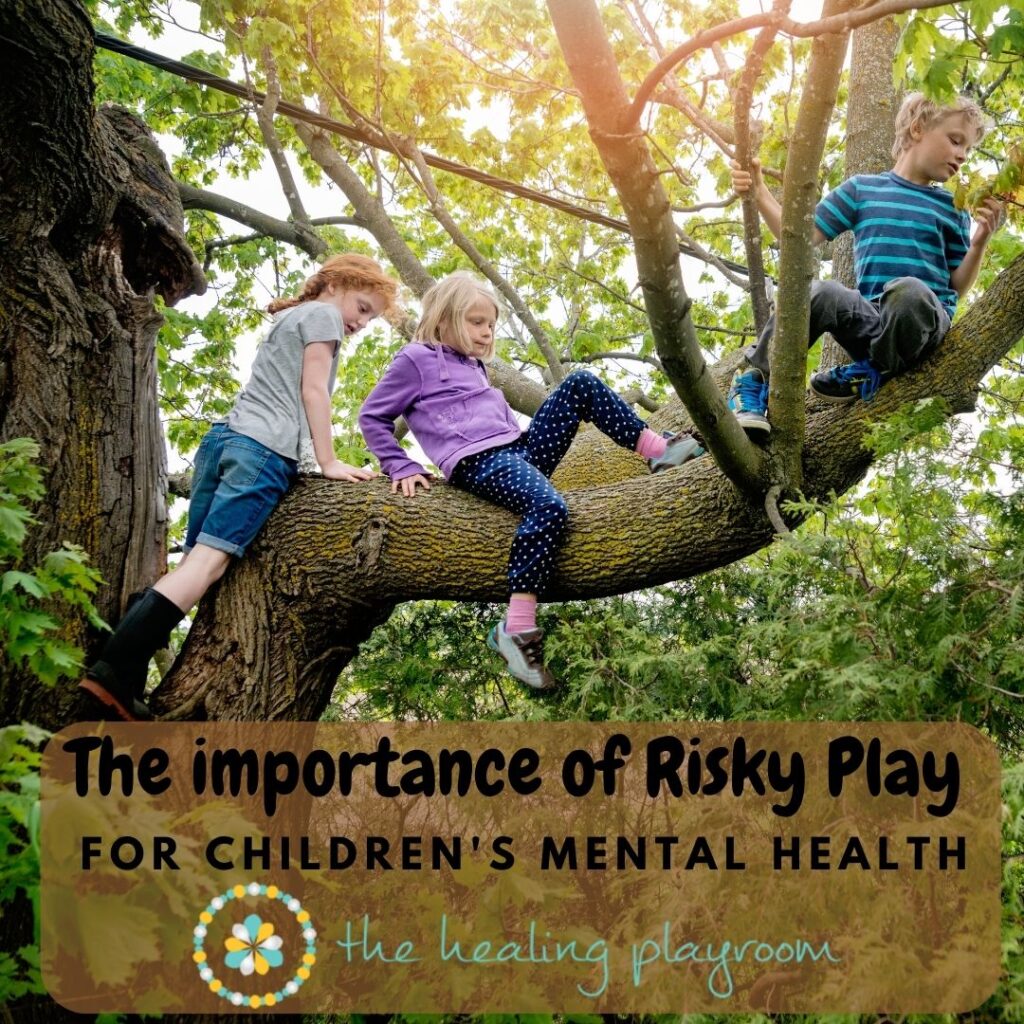
Play therapists know the value of play but not all play is created equal. There is one type of play, one that is in rapid decline in our country, that stands above the rest as a means of fortifying children with non-cognitive and protective skills needed for social, emotional, and physical well being. That is risky play.
Risky play has been helping children acquire skills and confidence for millennia, it is documented in all mammal species. Recent generations have stopped allowing children to engage in risky play in favor of safety. But our children aren’t any safer for it. In fact we are in the midst of a pediatric mental health crisis. In 2019, suicide was the second leading cause of death for 10-15 year olds.
While there are many possible causes for the decline in mental well being among children there are also a few reliable treatments. Many of the best of them don’t require a licensed professional. The one I’ll focus on in this essay is Risky Play.
Peter Gray, psychology researcher and free play advocate, writes that there are 6 categories of risky play seen in children all over the world and their benefits are numerous:
- Climbing great heights- children love to climb.
- Rapid Speeds- children like to go fast.
- Dangerous tools- in many cultures and some educational models children are allowed to use knives and farm working tools that would be considered dangerous by many.
- Dangerous Elements- children are interested in fire and love to be in or around large bodies of water.
- Rough and Tumble-all around the world children chase each other and fight playfully.
- Disappearing/getting lost-children play hide and seek to experience the thrill at separation and discovery and wandering to places unknown.
In the modern world we have deemed many of the above unacceptable activities for children excepting for tightly controlled environments where failure is as harmless as possible. That is a mistake. The types of play mentioned above serve to fortify children against invisible dangers like anxiety, depression, and helplessness.
Here’s how: Risky play helps reduce fears and phobias. Children who engage in activities that create some fear like riding quickly on a bike or picking which branch to hold on to next, are essentially taking small doses of fear that can inoculate them against chronic fears and worry about unknowns. Children become acquainted with the feeling of fear and it’s transitory nature.
Risky play helps to develop courage, a most essential virtue. Courage is the small voice that says, “You can do hard things.” and risky play is the place where you put that to the test. Courage is intrinsic to success in social situations, academic settings and professional development. The little girl who climbs to the highest point on the playset sees her own ability to overcome physical obstacles.
Risky play helps children learn to deal with the unexpected and to practice risk evaluation. Sliding quickly down a slide or spinning into dizzy oblivion brings uncertainty. Yet children relish in these activities. At the heart of anxiety is a deep-seated fear of not knowing what will happen. It is a plague of ‘what-ifs’. Life is full of uncertainties and knowing how to tolerate them is essential for healthy development. In risk evaluation, deciding which stone to step on or which path to take, children begin to develop instincts about safety and abilities. In Forest Schools (where healthy risks are part of the curriculum) a common phrase is “What’s your plan?” As in now that you’ve climbed up that tree how will you get down? It is a hard and fast rule in forest school that you do not help children into places they can’t get into on their own. Not because you are mean but because you want them to understand their limitations.
Risky play helps children to tolerate physiological arousal. A key component of anxiety is an oppositional relationship to bodily experiences. A racing heart induces panic and fear. In risky play your heart is regularly elevated with intense physical effort and excitement, playing tag and getting caught, for example. Then it slows back down, this serves to build a familiarity with the experience of physical arousal and reprieve.
Lastly, and most importantly, risky play increases physical competence. Knowing how to use your body well with ease is essential for the development of confidence in young children. It is the first thing they seek to learn. There is much research that connects physical coordination with better levels of cognitive development, executive function (perhaps our most important brain activity) and self-regulation, not to mention its benefits for physical health. In order for children to develop a healthy sense of self they must learn to be at home in their bodies. This sense of belonging is acquired through dynamic and frequent use. Running, jumping, climbing, and yes falling, all serve to increase physical competence, which in turn helps the growing child develop confidence.
Perhaps the most important element of risky play is an adult who is tolerant of uncertainty and failure. It’s a herculean task to watch our children take risks and fail without intervening.
But I implore you to notice the next time you see a fall on the playground (on mulch which is designed for falling) that it’s building a necessary tolerance for discomfort and disappointment. It’s creating persistence and resilience which children today are in desperate need of.
